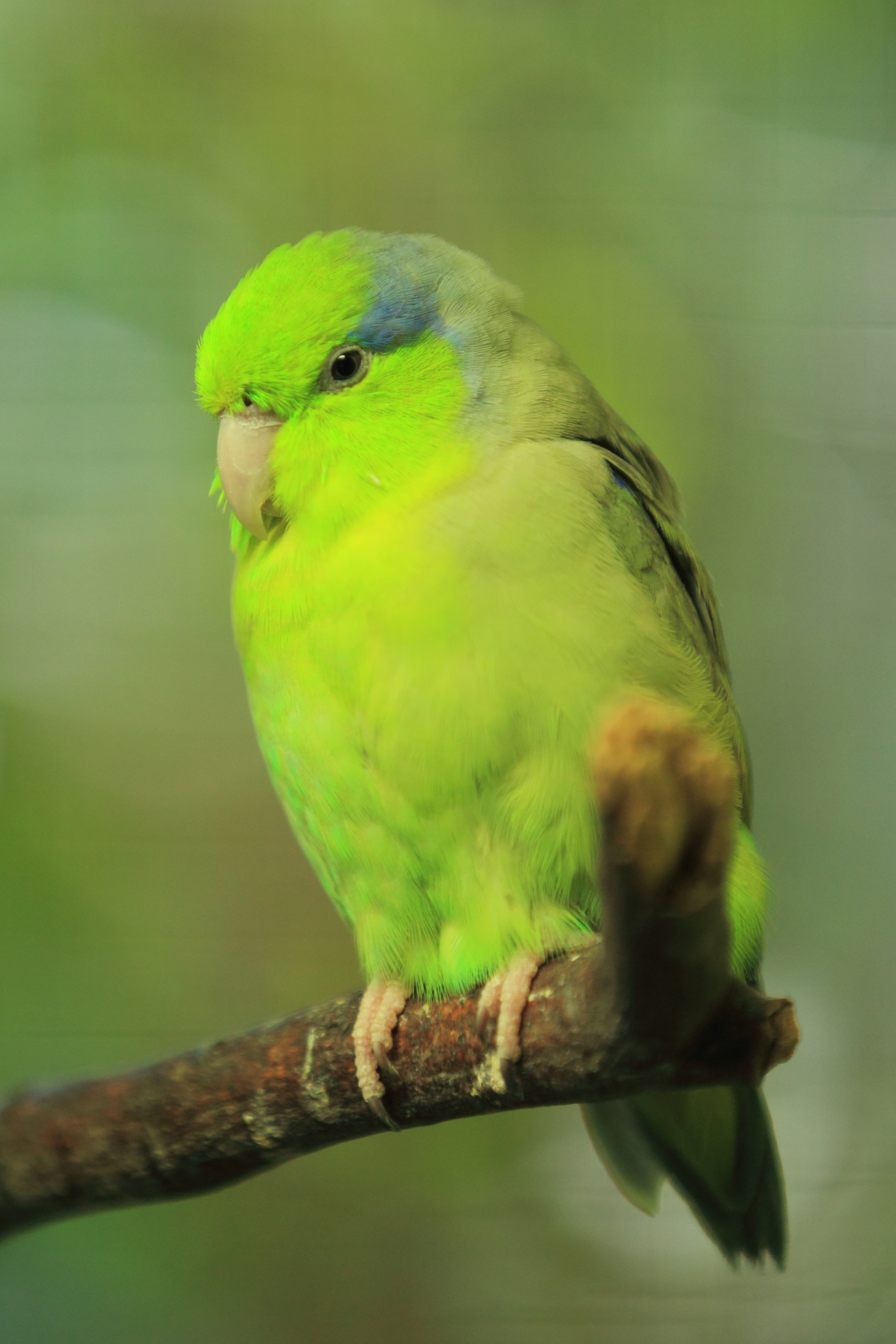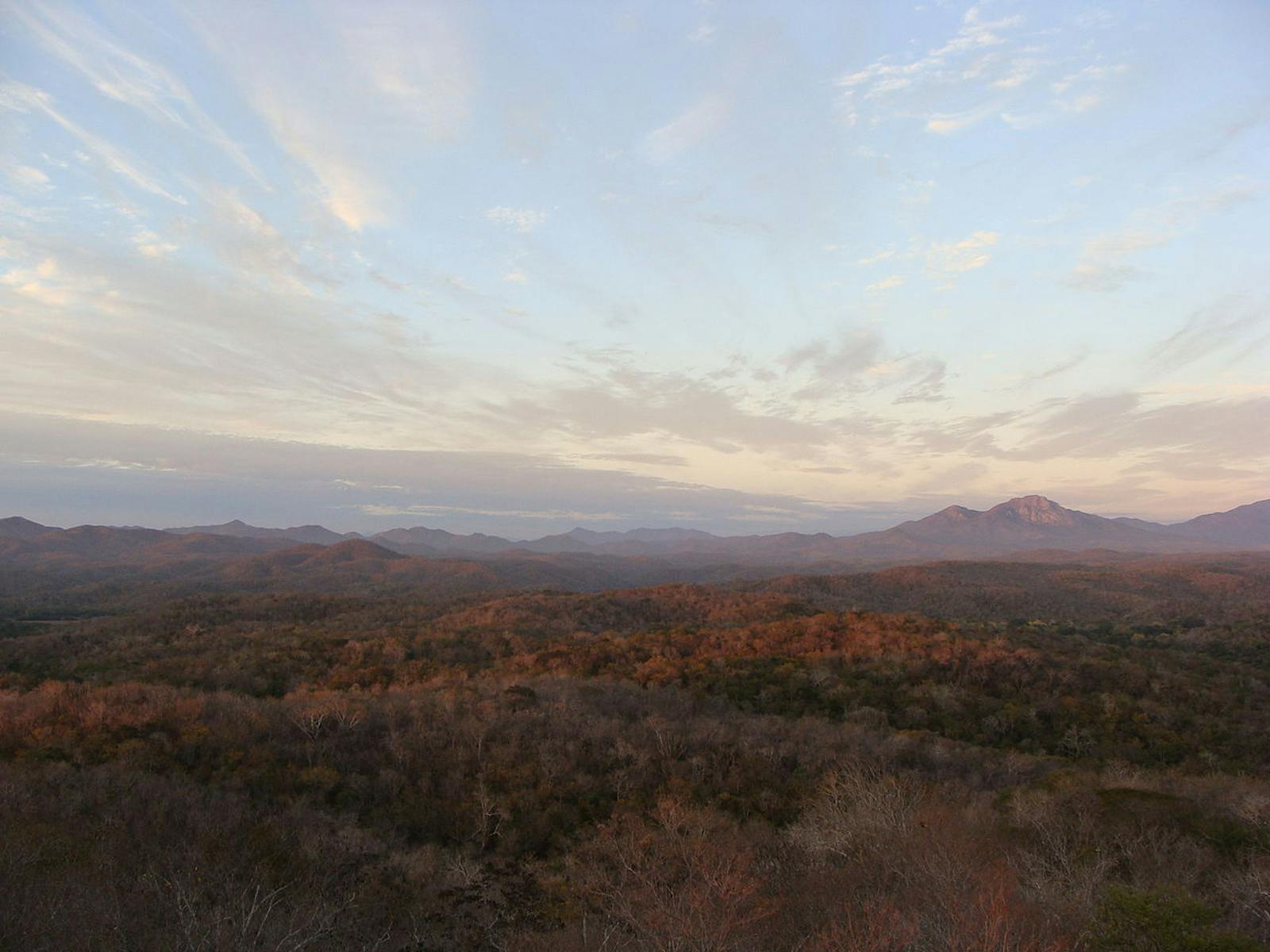Jalisco Dry Forests
The ecoregion’s land area is provided in units of 1,000 hectares. The protection goal is the Global Safety Net (GSN1) area for the given ecoregion. The protection level indicates the percentage of the GSN goal that is currently protected on a scale of 0-10.
Bioregion: Mexican Dry & Coniferous Forests (NT28)
Realm: Central America
Ecoregion Size (1000 ha):
2,619
Ecoregion ID:
534
Conservation Target:
33%
Protection Level:
3
States: Mexico
The endangered Magdalena woodrat is endemic to the Jalisco Dry Forests ecoregion, occurring only in coastal forest. They are nocturnal and inhabit the dense vegetation of the tree canopy. These primarily arboreal rats make runways through the woody vines and branches of the dense interconnected vegetation to get around. The woodrats use latrines to mark territories and to map their travels. They spend the day sleeping in nests, constructed of kapok, grass and other soft material, usually within a tree hollow.

The flagship species of the Jalisco Dry Forests ecoregion is the Mexican parrotlet. Image credit: Creative Commons
The Jalisco Dry Forests are located along the Pacific coast of the Mexican states of Nayarit, Jalisco, and Colima. The forests lie on terrain dominated by small mountains, where elevations range from 0–2,000 m along the coast, and up to 4,000 m near the Colima Volcano. The climate is tropical subhumid, with rains during 4-5 months of the year. Mainly during the rainy season, the ecoregion receives 730–1,200mm of rainfall. There is also a distinct dry season during which most trees lose their leaves. Soils are shallow and are derived from metamorphic and volcanic rocks.
A great diversity of plants dominate and characterize the dry forests of Jalisco, including glassywood, guanandi, fig, Mexican mahogany, Sideroxylon cartilagineum, and Bursera arborea among others, forming a middle forest layer of trees 15–20 m tall. Salmwood tree, Croton pseudoniveus, Lonchocarpus lanceolatus, Trichilia trifolia, and Caesalpinia eriostachys form the upper layer of trees at 20–30 m. Cacti species are prevalent in the ecoregion and there are some strands of coastal palm forest.
The Jalisco Dry Forests house almost 1,200 species of plants with 16% being endemic to the region. Endemic mammals include Mexican shrew, Michoacan deer mouse, Allen’s woodrat, the vulnerable banana bat, and the endangered Magdalena woodrat. Mammals play a crucial role as pollinators for the flora in the ecoregion due to a lack of invertebrate pollinators. About 300 bird species are active in the ecoregion. A significant portion include migratory birds from the US and Canada. There are two endemic bird areas listed in the ecoregion, although they provide no official protection.
The Jalisco Dry Forests have been intensively exploited, particularly in the last 50 years. The region was made easily accessible to people when a coastal road was opened in 1972. There are two protected areas within this dry forest ecoregion, the Biosphere Reserve of Chamela-Cuitzmala and the Playa de Cuixmala, established as a reserved zone and wildlife refuge in 1986. This reserve/refuge, unfortunately, does not protect the coastlines or Chamela Bay Islands. The two protected areas combined cover less than 10% of the original extent of the ecoregion.
Habitat destruction and over-exploitation of wildlife are the main threats endangering the survival of many species of plants and animals that live in the Jalisco dry forest ecoregion. Original vegetation has been logged and converted to agricultural fields. Habitat destruction affects both the vegetation and the wildlife of the dry forest, because some species require vast areas for their survival, while others need very specific habitats. The most significant effect of logging on the forests of Jalisco could be the loss of endemic species.
In addition to progressive destruction of their habitat, many wildlife species face extinction due to hunting and collection. In other cases, native villagers have intentionally reduced the populations of some species, particularly carnivores, to reduce competition between livestock and wildlife. Laws must be enforced to control illicit traffic of wildlife and exotic species.
The priority conservation actions for the next decade are to: 1) encourage natural resource management in agriculture and cattle practices to reduce deforestation; 2) restrict the logging industry and introduce sustainable take; and 3) establish protected areas, especially along the coast.
Citations
1. Valero, A. Schipper, J. Allnutt, T. 2018. Jalisco dry forests https://www.worldwildlife.org/ecoregions/nt0217 Accessed November 5, 2018.
2. Ceballos, G. and A. Miranda. 1986. Los Mamíferos de Chamela, Jalisco. Instituto de Biología, UNAM.
3. Lott, E.J., S. Bullockand, and J.A. Solís. 1987. Floristic diversity and structure of plan and arroyo forests of coastal Jalisco. Biotropica 19:228-235.
4. Vázquez, E. 2018. Xenomys nelsoni. The IUCN Red List of Threatened Species 2018: e.T23115A22359234. http://dx.doi.org/10.2305/IUCN.UK.2018 1.RLTS.T23115A22359234.en. Accessed November 5, 2018.



